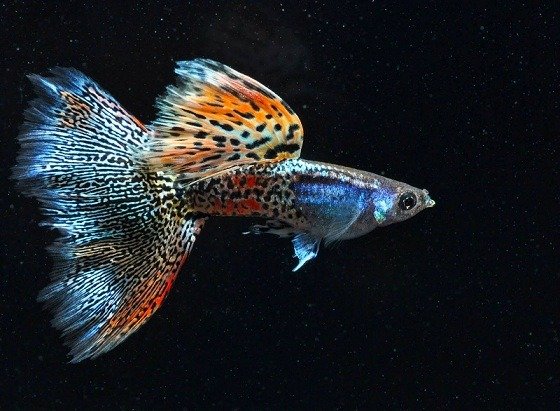
Discover Suitable Condition For Guppies :
Guppies are in the happy position of being able to handle a tropical aquarium or depending on the circumstances, live outside in a pond if the climate is a warm one. To get the best from your guppies it is advantageous to keep them supplied with a heated watery environment in which to live.
While the heaters themselves are not large, I would imagine most eco conscious people today would like to keep electricity costs as low as possible. This is achievable by keeping your tank in a room where temperature fluctuations are limited. You will have seen how specialist fish shops keep the room temperatures as warm as possible with out being uncomfortable; this is so the aquariums maintain their warmth and the shop owners do not run up huge bills.
Large fish farms have well insulated and maintained external heating services. This also reduces wear and tear on the heaters and in maintaining a steady external temperature, the accidental failure in a heater minimizes any trauma to your fish.
Setting up an aquarium for your guppies will include the aspect of supplying a suitable heater and using it correctly. This ensures that the water is at a controlled temperature of around 75 degrees Fahrenheit or 24 degrees Celsius.
This temperature suits many of the fish kept today in tropical aquariums of all shapes and sizes. It helps to maintain aquarium comfort if the top of the tank is covered for most of the time in order to reduce evaporation and as a consequence loss of heat. Cut glass covers to allow for heater connections and filters to be in the tank with out spoiling the aesthetics.
If you choose, cover the external walls with polystyrene to further insulate the tanks. To cover the obvious attach pictures to the external tank walls so that looking through the aquatic scene you cannot see the styrene but a scene of your choice. These are freely available from fish stores. Today the submersible and thermostatically controlled heaters that are bought from the shops simplify the heating of tanks.
There are alarms that will provide an indication of a heater defect. Depending on your requirements, it can be an auditory on or a visual one. A software program that will monitor just about everything in your aquarium is available today. The thermostat is heat sensitive and as the water temperature falls, it will switch itself on for as long as it requires to lift the temperature back to the requisite setting. It should not allow huge changes in the water temperatures it controls.
Choosing the right sized heater to heat your tank is necessary to ensure that most of the water is heated and kept at a constant temperature. In real life, out in their natural habitat the guppies do swim in variable temperatures, so all you would be doing is replicating the conditions they are used to living in. The submersion heaters today need to be placed where the aquarium water will get the most benefit.
Generally, this will be on an angle at the back of the tank. Wherever it is placed, it must not be resting on anything, and the water must be able to freely circulate around it. The heaters usually have explanations for the size of tank that they will service. When you go to buy a heater take your tank size along as well. The litres can then be worked out accordingly and the size of the heater correctly ascertained. A small stick on external bimetallic thermometer will indicate at a glance where the temperature of the tank is.
As well as heaters, the other source of heating comes from lighting. Fluorescent lamps are at the lower end of the scale, while incandescent lights will generate two or three times as much heat. Integrate this knowledge for use with your heaters and learn how to control both systems to get the best results for the least amount of cost.